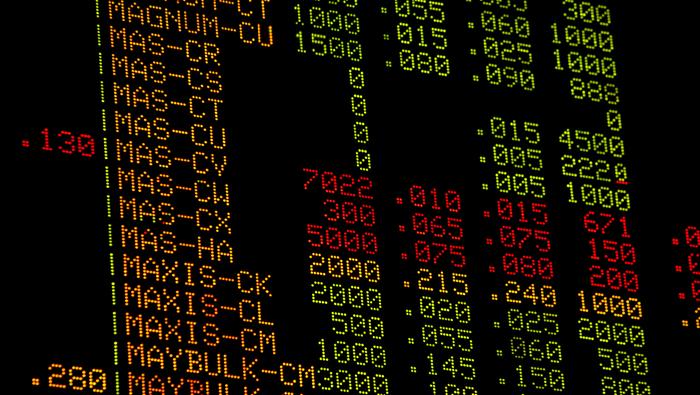
The value of securities held by your broker in a margin account is an outstanding loan. Initially, this loan value will be based upon the price at which you purchased the security. It will change daily in accordance with your cash balance and the value of your holdings. Margin calls may be inevitable in some cases. This article will discuss the potential risks associated with margin calls as well as regulations for margin accounts. These basics will ensure that your investment account does not suffer from margin calls.
Margin accounts: Regulations
For a broker to sell securities on margin, they must comply with certain conditions. The customer's equity must equal at least 25% of the price of each security. To maintain account balance, the brokerage may have to ask the customer for additional funds. This is known as a margin call, and may result in the broker selling the customer's securities.

Minimum equity
If you're using a brokerage margin account, you need to be aware of the minimum amount of equity that must be held in order to purchase securities. For example, if a stock's closing price is $60, you would need $15,000 equity to buy additional shares. You shouldn't sell any securities if you don't have this much equity. TD Ameritrade reduces the minimum equity requirement for securities in margin accounts to be equal to the whole number.
Loan repayment schedule
A margin account gives you the option of using a loan to purchase and sell securities. The account serves as collateral for the loan. If your securities lose value, you might have to sell them to make up the difference. Margin accounts are best for those investors who have high net worth and an understanding of market conditions. Here are some basics about margin accounts.
Risk of margin calls
A broker may make margin calls on securities you hold. You can mitigate this risk by diversifying the portfolio and watching your balance closely. They are more susceptible to sudden changes and margin calls. Volatility can trigger margin call. Inverse correlations are a good way to reduce risk, but they can be volatile, especially during market turmoil. It is important to be vigilant about your accounts and have a plan for repaying in case there is a margin call.

Transferring margins from one brokerage firm into another
You will need to compare your existing account information and the records of your new brokerage firm when you transfer your margin. Ask about delays or other issues that could delay the transfer. Ask if margin accounts are available at the new firm. Also, ask if they have minimum margin requirements. If they allow margin accounts, you can start trading immediately. There are potential pitfalls to avoid, including losing all of the margin.
FAQ
What is the difference in the stock and securities markets?
The entire market for securities refers to all companies that are listed on an exchange that allows trading shares. This includes stocks and bonds, options and futures contracts as well as other financial instruments. Stock markets are generally divided into two main categories: primary market and secondary. Stock markets that are primary include large exchanges like the NYSE and NASDAQ. Secondary stock markets are smaller exchanges where investors trade privately. These include OTC Bulletin Board Over-the-Counter and Pink Sheets as well as the Nasdaq smallCap Market.
Stock markets are important as they allow people to trade shares of businesses and buy or sell them. It is the share price that determines their value. The company will issue new shares to the general population when it goes public. Dividends are received by investors who purchase newly issued shares. Dividends refer to payments made by corporations for shareholders.
Stock markets not only provide a marketplace for buyers and sellers but also act as a tool to promote corporate governance. Boards of Directors are elected by shareholders and oversee management. Managers are expected to follow ethical business practices by boards. The government can replace a board that fails to fulfill this role if it is not performing.
Can bonds be traded?
They are, indeed! You can trade bonds on exchanges like shares. They have been for many, many years.
The difference between them is the fact that you cannot buy a bonds directly from the issuer. You must go through a broker who buys them on your behalf.
This makes it easier to purchase bonds as there are fewer intermediaries. This means that selling bonds is easier if someone is interested in buying them.
There are several types of bonds. Some pay interest at regular intervals while others do not.
Some pay quarterly, while others pay interest each year. These differences make it easy for bonds to be compared.
Bonds are very useful when investing money. If you put PS10,000 into a savings account, you'd earn 0.75% per year. This amount would yield 12.5% annually if it were invested in a 10-year bond.
If all of these investments were accumulated into a portfolio then the total return over ten year would be higher with the bond investment.
What are some of the benefits of investing with a mutual-fund?
-
Low cost - buying shares from companies directly is more expensive. Buying shares through a mutual fund is cheaper.
-
Diversification – Most mutual funds are made up of a number of securities. One security's value will decrease and others will go up.
-
Professional management – professional managers ensure that the fund only purchases securities that are suitable for its goals.
-
Liquidity is a mutual fund that gives you quick access to cash. You can withdraw your money at any time.
-
Tax efficiency – mutual funds are tax efficient. This means that you don't have capital gains or losses to worry about until you sell shares.
-
For buying or selling shares, there are no transaction costs and there are not any commissions.
-
Mutual funds are simple to use. All you need to start a mutual fund is a bank account.
-
Flexibility - You can modify your holdings as many times as you wish without paying additional fees.
-
Access to information: You can see what's happening in the fund and its performance.
-
Ask questions and get answers from fund managers about investment advice.
-
Security - You know exactly what type of security you have.
-
You have control - you can influence the fund's investment decisions.
-
Portfolio tracking - You can track the performance over time of your portfolio.
-
Easy withdrawal - You can withdraw money from the fund quickly.
Investing through mutual funds has its disadvantages
-
There is limited investment choice in mutual funds.
-
High expense ratio. The expenses associated with owning mutual fund shares include brokerage fees, administrative costs, and operating charges. These expenses can impact your return.
-
Lack of liquidity - many mutual fund do not accept deposits. They must only be purchased in cash. This limits the amount that you can put into investments.
-
Poor customer support - customers cannot complain to a single person about issues with mutual funds. Instead, you need to contact the fund's brokers, salespeople, and administrators.
-
High risk - You could lose everything if the fund fails.
What is security in the stock exchange?
Security is an asset that produces income for its owner. The most common type of security is shares in companies.
A company could issue bonds, preferred stocks or common stocks.
The earnings per shared (EPS) as well dividends paid determine the value of the share.
When you buy a share, you own part of the business and have a claim on future profits. If the company pays a payout, you get money from them.
You can sell shares at any moment.
Statistics
- Ratchet down that 10% if you don't yet have a healthy emergency fund and 10% to 15% of your income funneled into a retirement savings account. (nerdwallet.com)
- For instance, an individual or entity that owns 100,000 shares of a company with one million outstanding shares would have a 10% ownership stake. (investopedia.com)
- Our focus on Main Street investors reflects the fact that American households own $38 trillion worth of equities, more than 59 percent of the U.S. equity market either directly or indirectly through mutual funds, retirement accounts, and other investments. (sec.gov)
- Even if you find talent for trading stocks, allocating more than 10% of your portfolio to an individual stock can expose your savings to too much volatility. (nerdwallet.com)
External Links
How To
How to Trade on the Stock Market
Stock trading involves the purchase and sale of stocks, bonds, commodities or currencies as well as derivatives. The word "trading" comes from the French term traiteur (someone who buys and sells). Traders sell and buy securities to make profit. This is the oldest type of financial investment.
There are many different ways to invest on the stock market. There are three basic types of investing: passive, active, and hybrid. Passive investors simply watch their investments grow. Actively traded traders try to find winning companies and earn money. Hybrids combine the best of both approaches.
Passive investing is done through index funds that track broad indices like the S&P 500 or Dow Jones Industrial Average, etc. This type of investing is very popular as it allows you the opportunity to reap the benefits and not have to worry about the risks. You can just relax and let your investments do the work.
Active investing is the act of picking companies to invest in and then analyzing their performance. Active investors look at earnings growth, return-on-equity, debt ratios P/E ratios cash flow, book price, dividend payout, management team, history of share prices, etc. They then decide whether or not to take the chance and purchase shares in the company. If they believe that the company has a low value, they will invest in shares to increase the price. They will wait for the price of the stock to fall if they believe the company has too much value.
Hybrid investing combines some aspects of both passive and active investing. A fund may track many stocks. However, you may also choose to invest in several companies. In this instance, you might put part of your portfolio in passively managed funds and part in active managed funds.